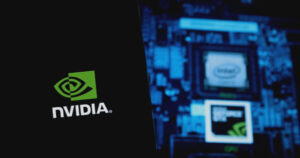Welcome to the Extreme Investor Network Blog
Today, we are excited to dive into the latest groundbreaking approach introduced by NVIDIA in deploying low-rank adaptation (LoRA) adapters to enhance the customization and performance of large language models (LLMs).
Understanding LoRA: A Game-Changing Technique
LoRA is a revolutionary technique that allows for fine-tuning of LLMs by updating a small subset of parameters, ultimately improving model performance. By injecting two smaller trainable matrices (A and B) into the model, LoRA enables efficient parameter tuning while significantly reducing the number of trainable parameters, making the process computationally and memory efficient.
Deployment Options for LoRA-Tuned Models: Flexibility is Key
Option 1: Merging the LoRA Adapter
This method involves merging the additional LoRA weights with the pretrained model to create a customized variant. While this approach avoids additional inference latency, it is best suited for single-task deployments due to its lack of flexibility.
Option 2: Dynamically Loading the LoRA Adapter
This method keeps LoRA adapters separate from the base model and dynamically loads the adapter weights at inference, based on incoming requests. This approach offers flexibility and efficient use of compute resources, making it ideal for applications like personalized models, A/B testing, and multi-use case deployments.
Unlocking the Power of NVIDIA NIM: Heterogeneous, Multiple LoRA Deployment
NVIDIA NIM enables dynamic loading of LoRA adapters, facilitating mixed-batch inference requests and supporting multiple custom models simultaneously without significant overhead. The architecture leverages specialized GPU kernels and techniques like NVIDIA CUTLASS to enhance GPU utilization and performance.
Performance Benchmarking: Ensuring Efficiency
When benchmarking the performance of multi-LoRA deployments, factors such as base model choice, adapter sizes, and test parameters play a crucial role. Tools like GenAI-Perf can provide insights into key metrics like latency and throughput, allowing for the evaluation of deployment efficiency.
Future Enhancements: Pushing the Boundaries of Efficiency and Accuracy
NVIDIA is continuously exploring new techniques to enhance LoRA’s efficiency and accuracy. Tied-LoRA aims to reduce trainable parameters by sharing low-rank matrices between layers, while DoRA bridges the performance gap between fully fine-tuned models and LoRA tuning by decomposing pretrained weights into magnitude and direction components.
Join the Future of Deploying Multiple LoRA Adapters with NVIDIA NIM
NVIDIA NIM offers a robust solution for deploying and scaling multiple LoRA adapters, supporting models like Meta Llama 3 8B and 70B, and LoRA adapters in both NVIDIA NeMo and Hugging Face formats. Comprehensive documentation and tutorials are available for those looking to get started on this innovative journey.
Stay tuned for more cutting-edge insights and updates from Extreme Investor Network on cryptocurrency, blockchain, and more.

